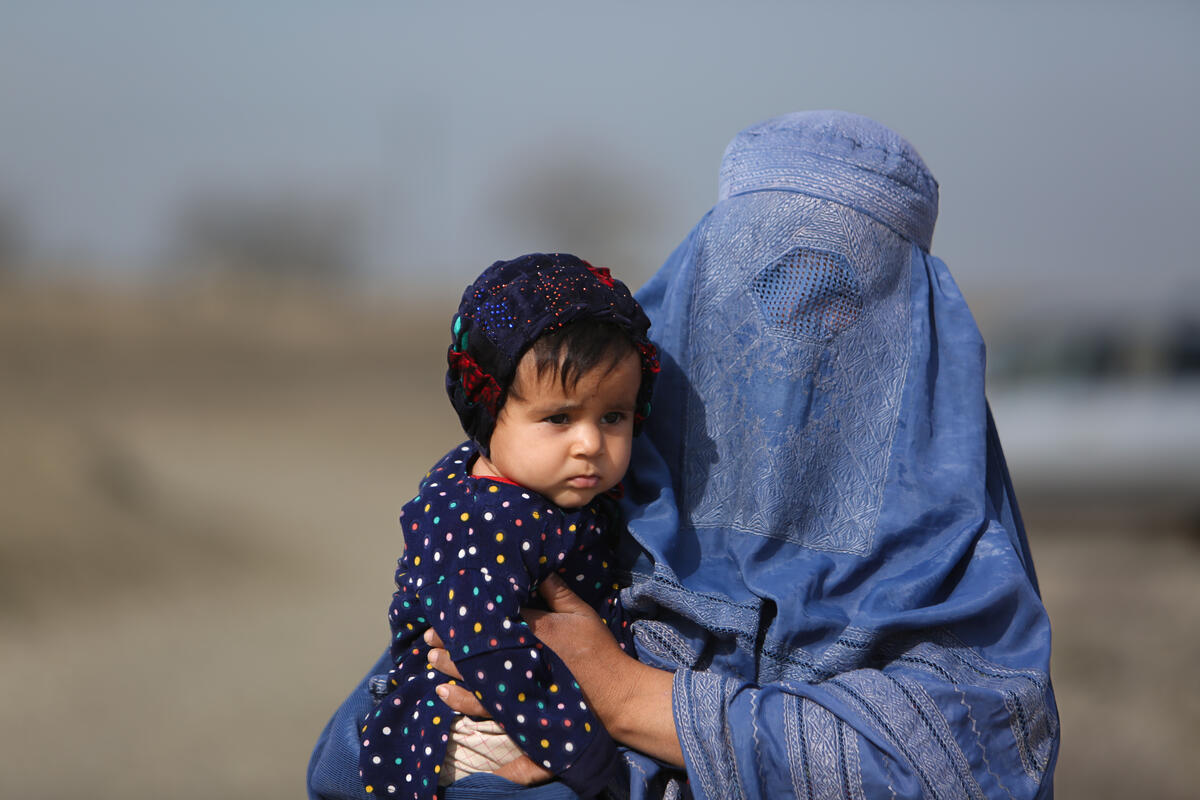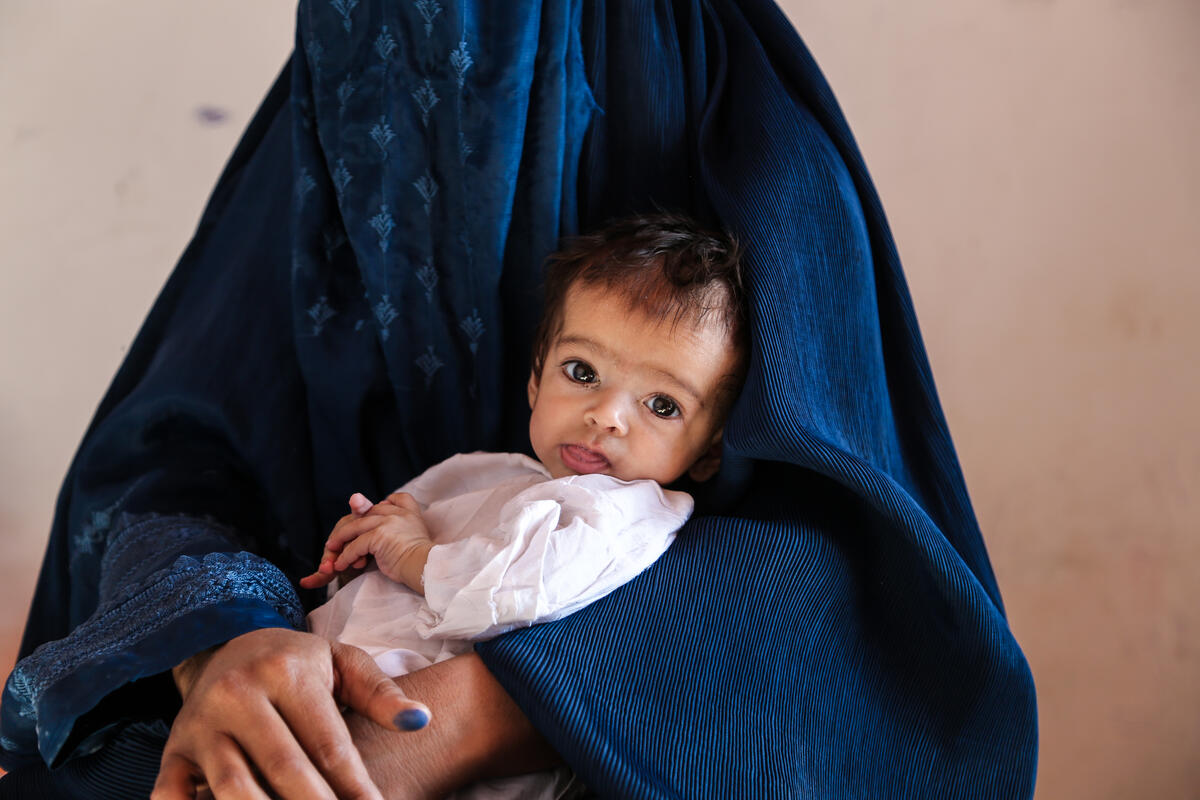

Baby Sara is suffering from Severe Acute Malnutrition (SAM) and is receiving treatment at a Save the Children mobile health facility in Sar-e-pul. Photo: Michal Przedlacki / Save the Children.
The number of children in Afghanistan not getting enough to eat has increased by 3.3 million in the four months since the previous government of Afghanistan fell in August this year, according to an analysis by Save the Children.
As of the end of November, 98% of the population do not have enough to eat – an alarming jump from 81% compared with before the 15 August, according to data from UN World Food Programme (WFP).
Afghanistan is facing its worst food crisis on record. This winter, 14 million children are expected to face potentially life-threatening levels of hunger, and rates of malnutrition are soaring.
With Afghanistan’s aid-dependent healthcare system on the brink of collapse, Save the Children warned that many severely malnourished children are unable to access the specialist treatment they need to survive. While the agency provides treatment for children suffering from acute malnutrition in Afghanistan, some critical referral pathways have been disrupted due to the crisis.
Hunoon has six children, all of whom are under the age of 12. The family has not had any income for months and is unable to afford even basic foods. Hunoon’s husband has twice tried to cross the border to Iran to find work but has been turned back each time. Without enough to eat, their youngest child, Sara*, has developed Severe Acute Malnutrition.
“If we could afford to, we’d eat twice or three times a day but we can’t. If we can afford it, I boil rice or I make soup, but sometimes we go five or six days without food,” said Hunoon.
“If he (my husband) finds work then he brings something home for us to eat. If not then we sleep with an empty stomach, in the cold. This is how we live.”
“When Sara was born I thought she was just hungry, but after we visited the health centre, I learned she wasn’t hungry, but weak … They said that she is malnourished and needed to be admitted to the hospital,” she said.
More than half of the population are resorting to drastic measures to feed their families – a five-fold increase from before the de-facto authorities took control on 15 August, according to the WFP. Last week, Save the Children spoke to one mother who was forced to give up one of her twins to feed the other.
Nora Hassanien, Acting Country Director of Save the Children in Afghanistan, said:
“We’re looking at one of the worst humanitarian crises we’ve ever seen. Desperate parents are coming to our clinics with children who are dangerously thin and malnourished. One of our doctors treated a woman who was nine months pregnant and feared she may be forced to give up her child because she couldn’t afford to feed them.”
“This heart-breaking and unjust scenario is being made worse because of sanctions and counter-terror policies, which can disrupt and delay the delivery of life-saving aid. Humanitarian agencies urgently need exceptions and carve-outs under those policies so that we can get help to children before the worst of winter sets in.”
Save the Children is providing families like Hunoon’s with urgent food, breastfeeding and nutrition counselling, hygiene kits, blankets and warm clothes to help them get through the bitter winter.
The crisis in Afghanistan comes at a time when the world is facing its biggest hunger crisis of the 21st century, with an estimated 5.7 million children under five on the brink of starvation across the globe. A further 13 million children under 18 are facing extreme food shortages, the organisation said.
A deadly combination of COVID-19, conflicts, and the impacts of climate change have pushed hunger and malnutrition levels to a record global high. Without urgent action, the world could see tens of thousands of children starving to death, reversing decades of progress.
